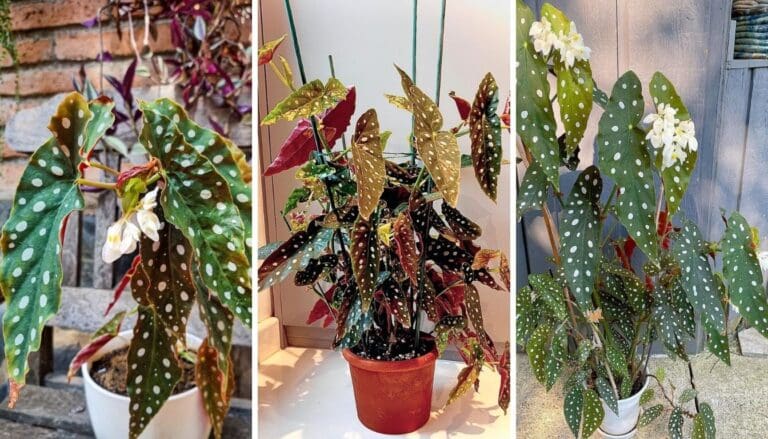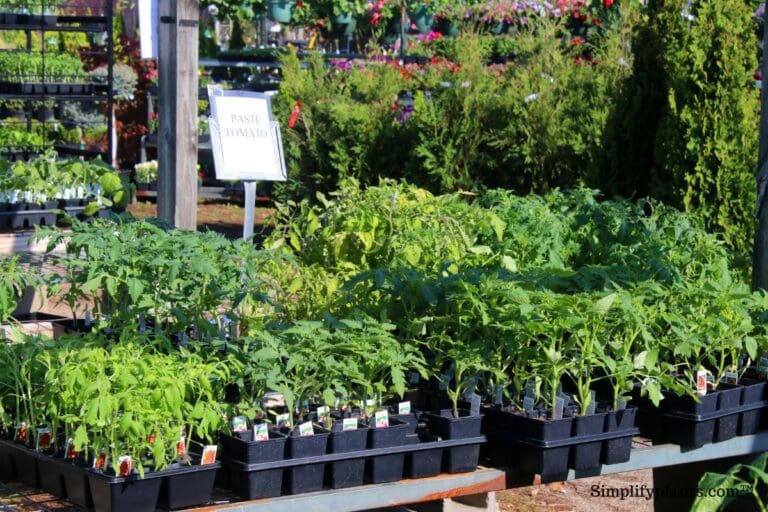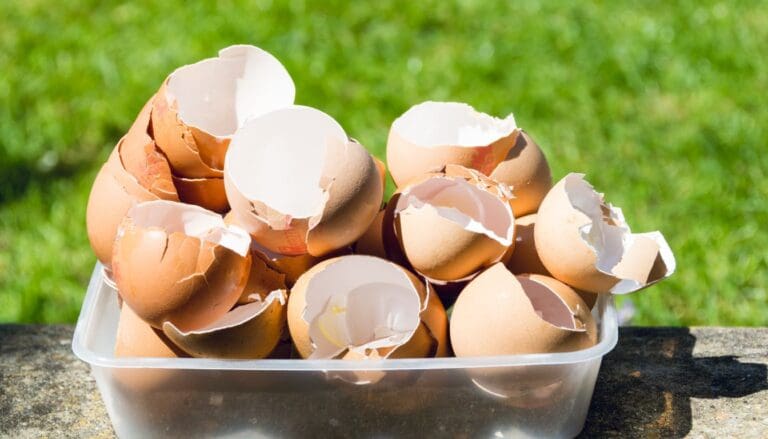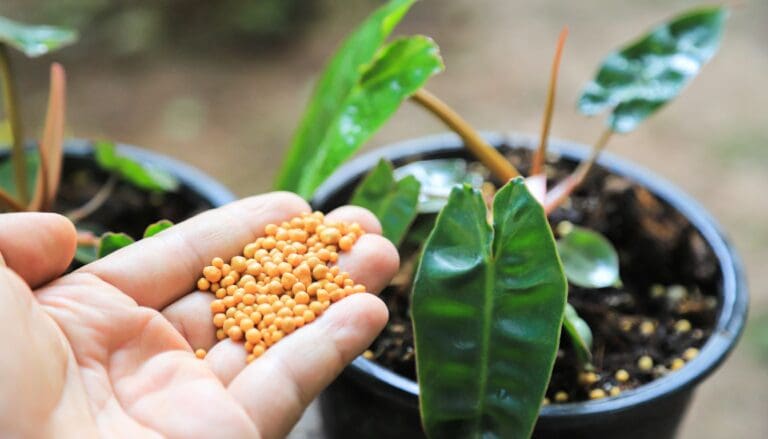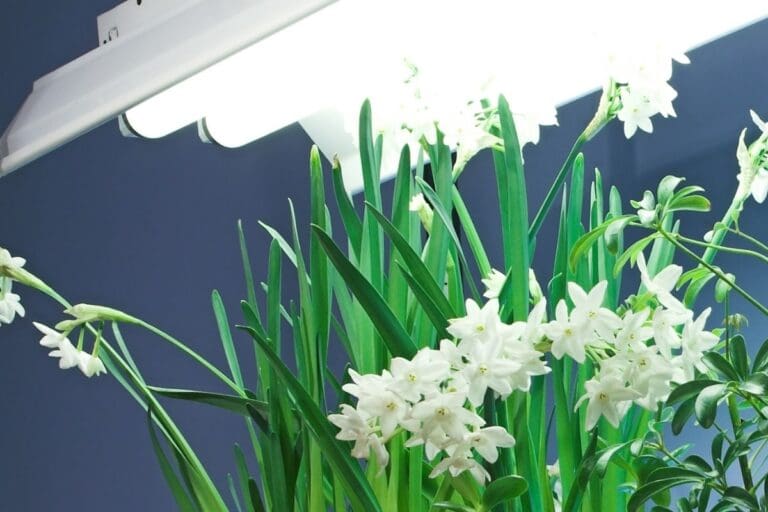7 Ways to Transition Your Houseplants for Fall and Keep Them Thriving
I love having houseplants around, but honestly, they need a bit of extra attention when the seasons start to shift.
Once fall rolls in, my plants have to deal with cooler temperatures and less sunlight.
Transitioning my houseplants for fall helps keep them healthy and strong. So, here are a few easy things I do to help my plants get ready for the chilly months ahead.
Please note: Simplify Plants is reader-supported. As an Amazon Associate, I earn from qualifying purchases made by our readers with no extra cost added to you all! Some links in the post are affiliate links and I get a commission from purchases made through links in the post.
1) Gradually reduce watering frequency

As fall approaches, I start to water my houseplants a bit less. The days get shorter, the air cools down, and my plants just don’t drink up water like they did in summer.
If I keep up my summer watering routine, I notice the soil stays soggy for way too long. That’s a recipe for root rot and all sorts of headaches.
I usually stick my finger about an inch into the soil to check for dryness. If it’s dry, I water. If not, I wait a couple more days.
Spacing out my watering sessions helps a lot. For example, if I used to water every four days, I stretch it to six, then maybe eight as fall goes on.
Each plant is a little different, so I try to pay attention to what they’re telling me. Droopy leaves or yellow spots usually mean I’m overdoing it.
Some plants go almost dormant in winter, so I cut back even more for those. Sometimes they only need water when the soil is bone dry.
Honestly, just easing up on watering bit by bit keeps my plants much happier as the weather changes.
2) Move plants to a brighter location

With fall, the sunlight just isn’t as strong and the days are shorter. I always catch my houseplants reaching for any bit of light they can get.
To help them out, I move my plants closer to windows that get the best sun. South or west-facing windows are my go-tos.
I clear off sills or little tables so my plants have space to soak up light. If I leave them in shady corners, they get leggy and sad.
But I’m careful not to let the leaves touch cold glass, because that can really damage them. I also give my plants a little spin every week so all sides get their time in the sun.
If a room is just too dark, I’ll use a basic grow light. A simple LED grow light makes a big difference, especially when it’s gloomy outside.
I set the light on a timer so I don’t have to think about it. Getting this sorted before fall really helps my plants keep their color and strength.
3) Increase humidity with a pebble tray
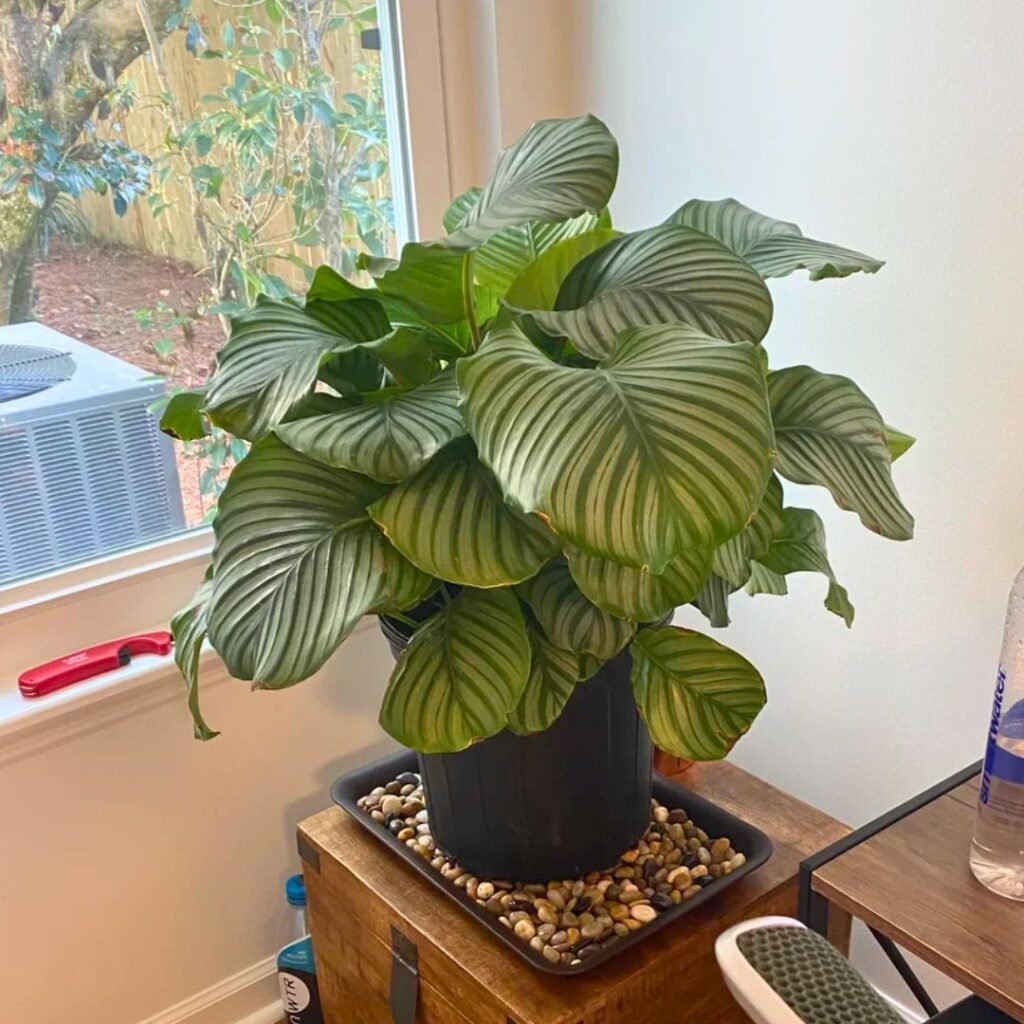
When fall hits, the air inside gets noticeably drier. Most houseplants need more humidity to stay happy as the seasons flip.
A pebble tray is my favorite low-effort way to add moisture. I grab a shallow tray, fill it with pebbles, and pour in just enough water to cover the bottom of the stones.
Then, I set my plant pot on top. The roots don’t sit in water, so there’s no risk of rot. As the water evaporates, it boosts humidity right around the plant.
I refresh the water every few days—no fancy gadgets needed. It’s cheap, quick, and doesn’t get messy.
Pebble trays work even better when I group plants together. They all help keep the air a bit more humid for each other.
My tropical plants especially seem to perk up when I do this. Their leaves stay greener and don’t get that crispy look.
4) Prune dead or yellowing leaves
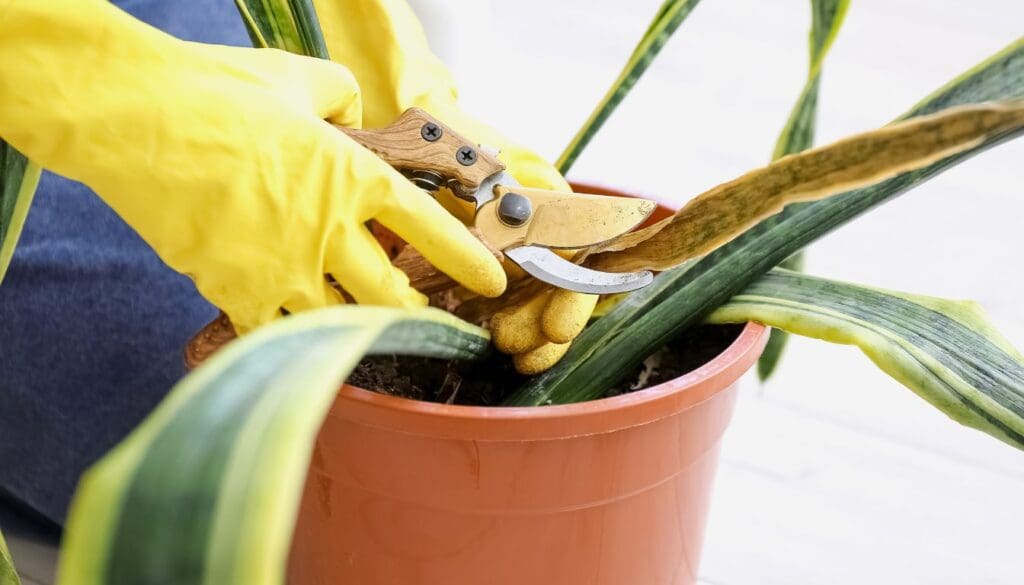
When fall rolls in, I always check for dead or yellowing leaves. Those leaves aren’t helping anyone and can attract pests or mold.
I grab some clean, sharp scissors and snip off anything that looks old, brown, or just sad. I try not to cut healthy leaves—no need to go overboard.
Pruning makes my plants look tidier, and it lets more light get to the good leaves. I toss the trimmed leaves in the trash or compost, not back in the pot.
If I spot mushy or black stems, I cut those too, just to be safe. That can stop any disease from spreading.
I do a quick check every week. Small trims here and there keep things under control and way less stressful.
5) Check for pests before bringing plants indoors
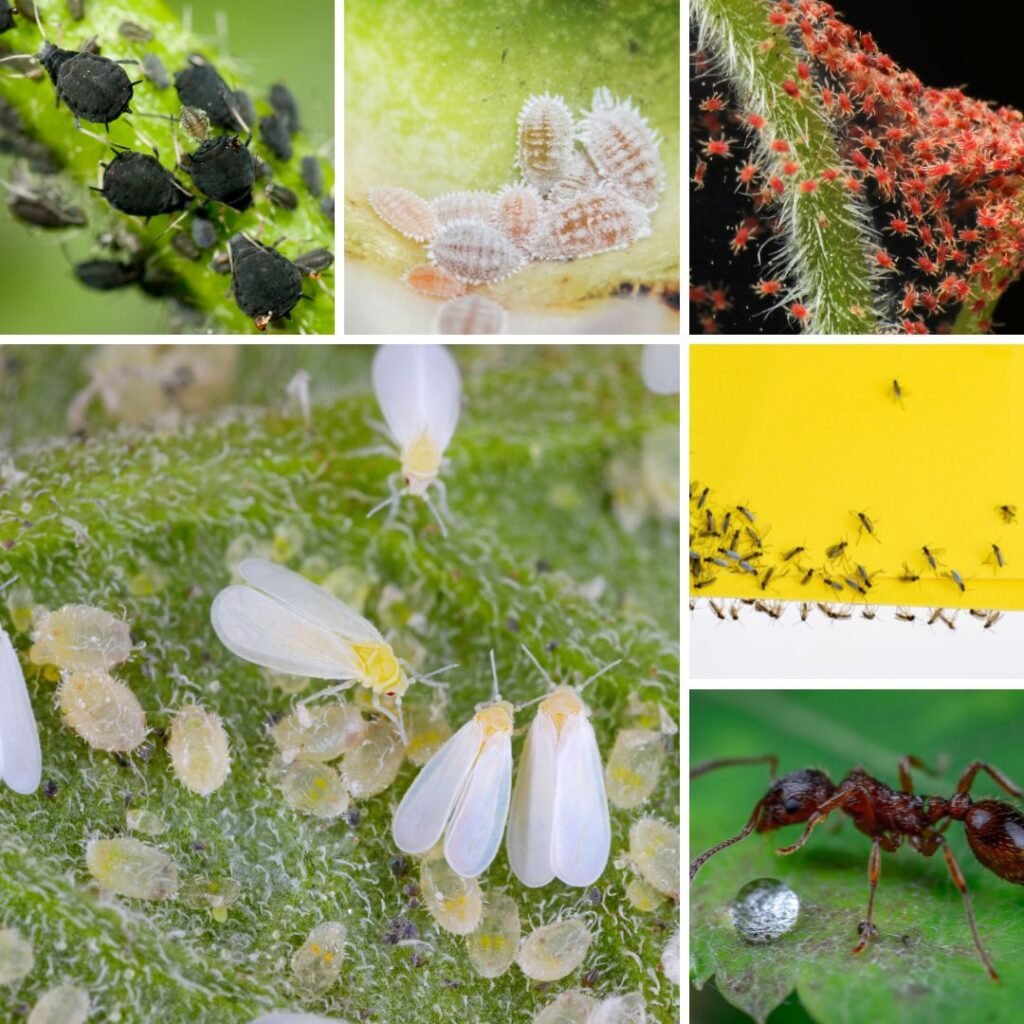
Before I bring my houseplants inside for fall, I give them a good once-over for bugs. I really don’t want to invite any pests into my home.
I check under the leaves and along the stems. Spider mites, aphids, and mealybugs love to hide there.
A magnifying glass helps me spot the tiny ones. Sometimes I tap the plant to see if anything falls out—gross, but it works.
If I find bugs, I’ll wash the leaves or wipe them with a damp cloth. For stubborn infestations, I use a mild insecticidal soap and let the plant dry outside.
The soil gets a look too, since fungus gnats can hang out there. I poke around a bit to see if anything’s moving.
If I’m unsure, I’ll just quarantine a plant for a week or two. Better safe than sorry.
Taking my time with this step keeps my other houseplants safe and bug-free.
6) Switch to a balanced 10-10-10 fertilizer

When it starts to cool off, I switch my plant food to a balanced 10-10-10 fertilizer. That’s equal parts nitrogen, phosphorus, and potassium—nothing fancy, just steady nutrition.
A 10-10-10 mix doesn’t push wild growth like some summer fertilizers. It’s gentle and balanced, which is perfect for fall.
I always dilute the fertilizer with water, following the directions. Too much can burn roots, so I go easy—once every few weeks works for me.
This helps my plants handle the seasonal change without stressing out. If you haven’t tried it, you can find 10-10-10 at any garden shop.
I usually pick a liquid version, but granules are fine if you’re careful. Just don’t overdo it—less is more this time of year.
7) Clean plant leaves gently with a damp cloth

As fall settles in, I make sure to wipe my plant leaves. Dust piles up fast and can block the sunlight.
I use a soft, damp cloth and just plain water—no soap or chemicals. I gently wipe both sides of each leaf, being careful not to tear anything.
Leaves sometimes get sticky or spotty, especially after being outside. Wiping them down helps my plants breathe and lets me spot any pests early.
I don’t scrub hard, just a gentle swipe while holding the leaf steady. Doing a few leaves at a time keeps it from feeling like a chore.
Clean leaves just look better and help the plant soak up more energy, which is super important with less sunshine in the fall.
Understanding Seasonal Changes for Houseplants
When fall comes, I notice the air gets cooler and days feel shorter. These changes really mess with my houseplants, especially how they grow and what they need.
How Cooler Temperatures Affect Plant Health
Cooler temps slow down growth for a lot of houseplants. If my place gets drafty, I pay extra attention to plants near windows.
Cold air can be rough on tropical plants—sometimes I see yellow leaves or just sad-looking growth. I move them away from cold windows and doors, and I avoid putting them near heaters or vents since that dries them out.
For the really sensitive ones, I’ll use a little thermometer to keep tabs on the room. Most of my plants seem happiest between 60°F and 75°F (16°C to 24°C).
If I spot leaves dropping or brown edges, it might be cold stress. I’ll move those plants to a more stable spot and keep an eye on them.
Adjusting Light and Humidity Indoors
With shorter days, my houseplants get less sunlight. I usually move them closer to south or east-facing windows to catch whatever sun’s left.
If natural light isn’t cutting it, I’ll add a grow light. It’s not fancy, but it helps my plants get enough energy.
The air gets drier too, especially once the heat kicks on. Low humidity can make leaves crispy or brown at the tips. I use a humidity tray or a small humidifier to raise moisture levels.
Sometimes I mist my plants every few days, but I try not to overdo it—don’t want mold. Grouping plants together helps them share moisture, too.
Keeping an eye on light and humidity goes a long way in helping my houseplants handle the shift into fall.
Common Houseplant Challenges During Fall
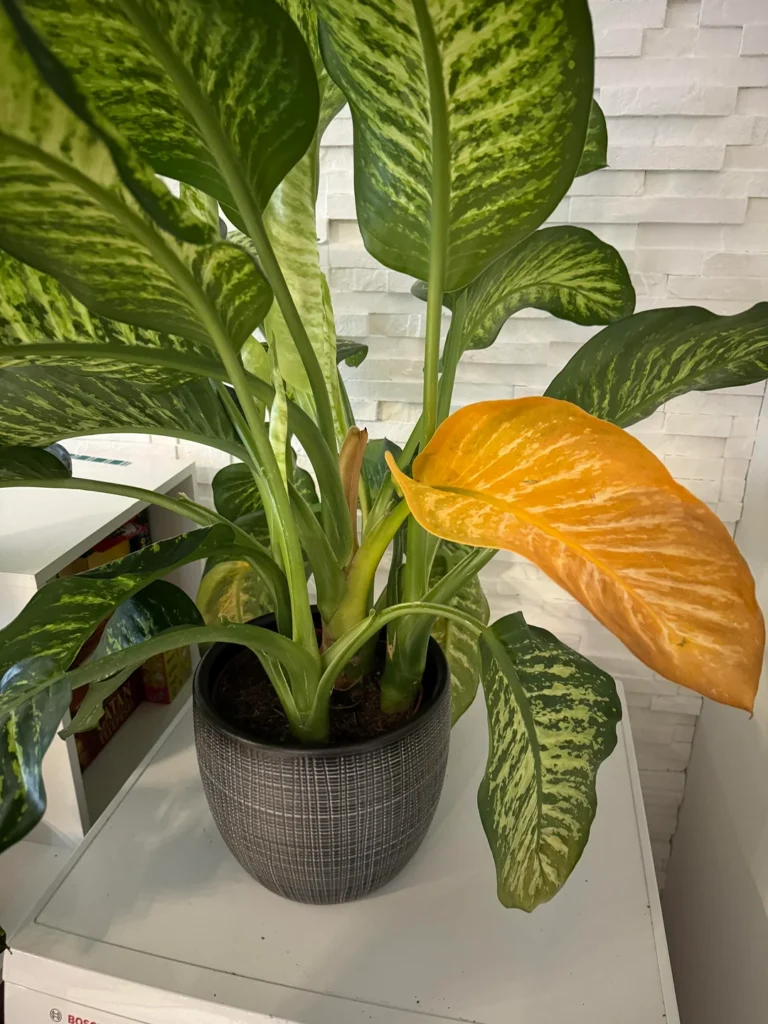
When fall shows up, a lot of houseplants struggle with the changes in light, temperature, and moisture. I just try to stay alert for any new problems so my plants can keep thriving.
Preventing Overwatering Issues
As the weather cools, my houseplants tend to soak up water much more slowly.
Overwatering is a leading cause of root rot in fall. The soil just stays wet for longer than you’d expect, and that’s a recipe for trouble.
I always check if the top inch of soil is dry before I water anything.
Usually, I go with the finger test or poke a wooden stick in there. If it still feels damp, I just wait another day or two—no rush.
Signs of overwatering:
- Yellowing leaves
- Mushy stems
- Wilting, even when soil is wet
Pots with drainage holes are honestly a lifesaver.
I always empty the trays after watering so there’s no water sitting at the roots. Less water is usually better in fall. Plants are resting more, so they just don’t need as much.
Managing Pests in Cooler Months
Cooler weather seems to invite some pests right inside.
Spider mites and fungus gnats are the main culprits in fall, and sometimes they catch me off guard.
I inspect my plants every week for small bugs, sticky residue, or that webbing you sometimes see.
When I notice pests, I wipe the leaves with a damp cloth or give them a gentle spray of water. Neem oil spray is my go-to for most bugs—it’s pretty effective if you use it right.
Good air flow makes a difference, honestly.
I try to keep the air moving around my plants, since stagnant air just makes pest problems worse. Quarantining new plants is also a smart move so any bugs don’t get a chance to spread.
Frequently Asked Questions
I always tweak my houseplant care as soon as fall rolls around.
Cooler temps, shorter days, and drier air all change what my plants need indoors.
What should I adjust in my plant care routine as the seasons change?
First thing, I check how much sunlight my plants are actually getting, since the days get so much shorter in fall.
I also cut back on watering and look for any dead or yellow leaves to prune them away.
How do I know if my houseplants need less water in the fall?
I notice the soil just doesn’t dry out as fast as it does in the summer.
If the top inch still feels damp after a couple days, I just wait longer before watering again.
Can you give tips for acclimating plants to lower light conditions?
I move my plants closer to the windows to give them a fighting chance at getting enough light as the days get shorter.
If the room’s still too dim, I’ll use a grow light for a few hours—nothing fancy.
What’s the best way to protect my houseplants from cold drafts?
I keep my plants away from doors and windows that get opened a lot.
If I feel a chill from a window, I just move the plants farther into the room.
Should I change the feeding schedule for my plants in autumn?
I feed my plants less often in fall since they’re barely growing.
Most of the time, I just stop fertilizing until spring rolls around.
How can I increase humidity for my houseplants during the fall?
I like to set my plant pots on trays filled with pebbles and a bit of water—it’s a simple trick that helps add some moisture to the air.
Sometimes I’ll bunch my plants together, or maybe plug in a small humidifier nearby if things are feeling extra dry.
Recommended Garden Supplies
| Product Image | Our Recommended Gardening Supplies | Check Offers! |
|---|---|---|
Top Top
Top
Top
Top
Top
Top
Top
Top | rePotme Houseplant and Tropical Classic Potting Soil Mix | Check Offer On Amazon |
 Top
Top
Top
Top
Top
Top
Top
Top | Espoma Organic Indoor Plant Food | Check Offer On Amazon |
 Top
Top
Top
Top
Top
Top
Top
Top | GooingTop LED Grow Light 6000K Full Spectrum Clip Plant Growing Lamp | Check Offer On Amazon |
 Top
Top
Top
Top
Top
Top
Top
Top | Soil Moisture Meter | Check Offer On Amazon |
 Top
Top
Top
Top
Top
Top
Top
Top | Govee Hygrometer Thermometer, Bluetooth Enabled! | Check Offer On Amazon |
 Top
Top | LEVOIT Humidifiers for Large Room(Best For Plants) | Check Offer On Amazon |
 Top
Top
Top
Top
Top
Top
Top
Top | Upgraded DIY Automatic Drip Irrigation Kit, 15 Potted Houseplants Support | Check Offer On Amazon |
 Top
Top
Top
Top
Top
Top
Top
Top | Stainless Steel Heavy Duty Gardening Tool Set | Check Offer On Amazon |
 Top
Top
Top
Top
Top
Top
Top
Top | Bonide Insecticidal Soap | Check Offer On Amazon |
 Top
Top
Top
Top
Top
Top
Top
Top | Bonide 32 oz Spray Neem Oil for Organic Gardening | Check Offer On Amazon |
 Top
Top
Top
Top
Top
Top
Top
Top | Garden Safe Fungicide | Check Offer On Amazon |

